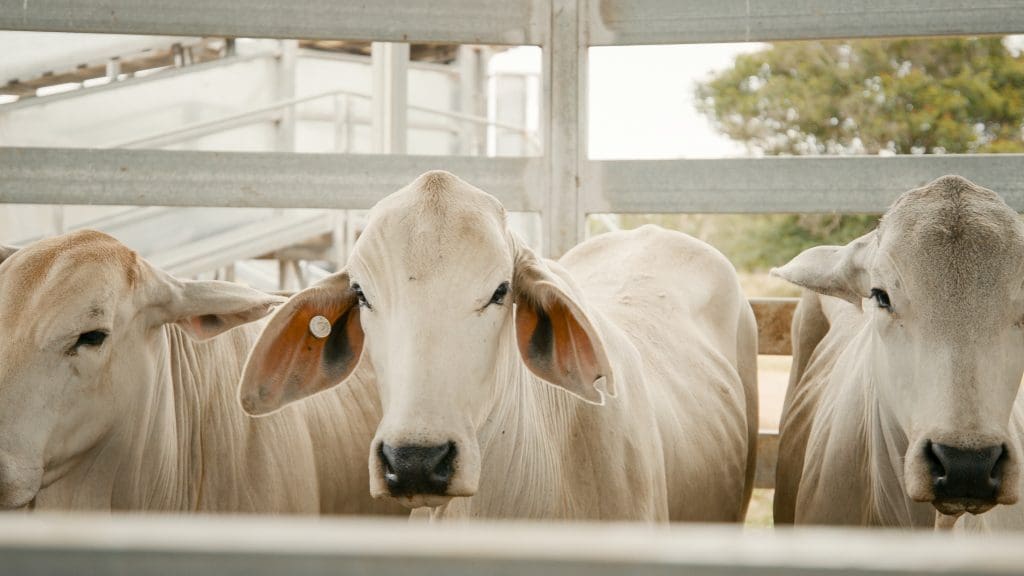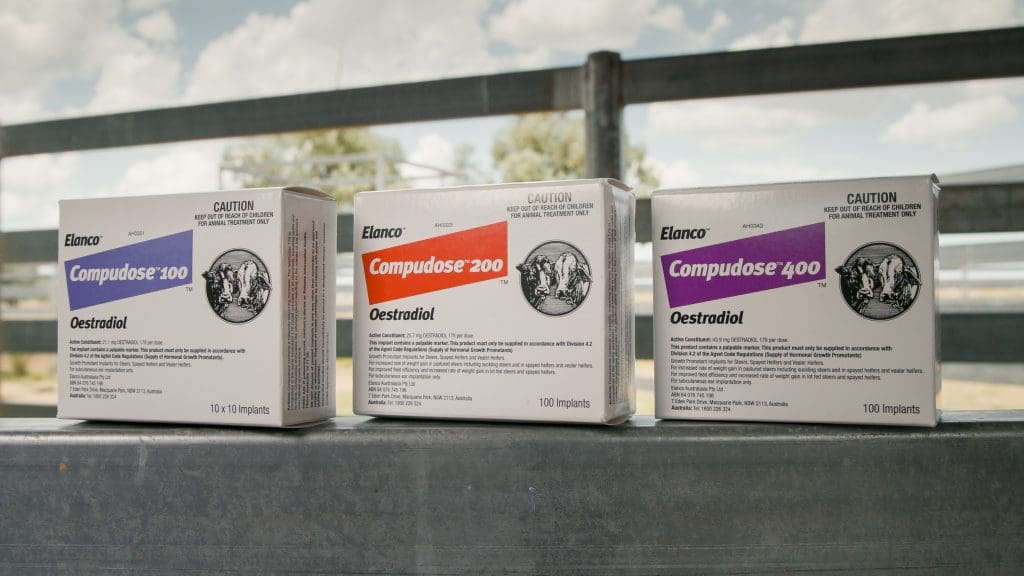
WITH increasing demand for grainfed cattle and exports of Australian beef, it’s important to select the right implant and implant strategy to suit your intended market.
A recent MLA Beef producer survey predicts the size of the national beef herd will increase 6pc to 30.2 million this year, as beef producers continue to restock and expand due to good seasonal conditions and a positive market outlook.1
Meanwhile, feedlot capacity stands at a record level of 1.65 million head, with utilisation running at about 87pc2, or 1.45 million head of cattle on feed. Grainfed beef now accounts for just less than 40pc of the national slaughter3 and one-third of all exports of Australian beef.2
Steady growth in implant use
Elanco Technical Services Consultant, Craig Stevenson, says the retention of more heifers, particularly in northern herds, has underscored the need to optimise the profitability of their steer turn-off.
“This has been reflected in a steady increase in the use of hormonal growth promotant implants in both the grassfed and grainfed sectors over the past five years,”4 he says.
“Implants have been widely used to improve growth rates and feed conversion efficiency in beef cattle for more than 40 years.
“It is estimated that the majority of grainfed cattle in Australia and at least 20pc of grassfed cattle in northern Australia destined for turn-off are now treated with implants at some stage of their lives.”3,4
Right implant for each application
Craig says choosing the right implant for each situation can make a big difference to profitability.
“Different implants contain different modes of action and formulation types, which have a major impact on the way they are best used,” he says.
Implants contain either oestrogenic-only compounds or a combination of oestrogenic and androgenic compounds.
Oestrogenic compounds stimulate the pituitary gland to release more of the body’s own natural growth hormones, increasing satellite cell proliferation, amino acid uptake and protein deposition.5
Oestrogenic-only implants have minimal impact on carcase fatness or marbling score, regardless of length of pay-out or if cattle are re-implanted after the initial pay-out period has expired.6
Examples include Compudose™ 400, 200 and 100, which contain oestradiol 17ß, a naturally-occurring oestrogen.
All Compudose implants consist of an inert silicone rubber core covered with a coating of medicated silicone rubber.
The active ingredient is slowly released into the bloodstream to provide a daily dose above the threshold for growth promotion.
The durable core can’t break or crush during implantation, helping to ensure consistent pay-out and long-term performance.
Combination implants
By comparison, oestradiol/trenbolone acetate (TBA) combination implants contain both oestrogenic and androgenic compounds.
Androgenic compounds (e.g. testosterone, TBA) act directly on muscle tissue, stimulating protein/muscle synthesis and reducing muscle breakdown.5
Oestrogenic/TBA combination implants can reduce carcase fatness and marbling score, particularly if cattle are implanted during the early stages of growth or are re-implanted after the initial pay-out period has expired.
In addition, oestrogenic/TBA combination implants have the potential to increase the incidence of dark-cutting carcasses particularly if cattle are slaughtered during the pay-out period.6
Conventional oestradiol/TBA combination implants consist of compressed pellets and are absorbed into the bloodstream after implantation.
Newer oestradiol/TBA combination implants have a polymer barrier coating that either releases the active ingredients at a slower rate than conventional compressed powder pellet formulations or delays the release of the active ingredients.
Target weights sooner
Craig says the objective of any growth promotion program should be to attain target market weights sooner with minimal impact on carcase or eating quality.
“The most suitable implant type for each situation needs to be based on the growth stage of cattle, the anticipated time to turn-off and available nutrition during the pay-out period,” he says.
“Many northern cattle are implanted at the first muster, which coincides with the start of the dry season when pasture availability, protein and digestibility are declining.
“As a guide, long-acting oestradiol-only implants, such as Compudose 400, are recommended for use in growing cattle more than 400 days from anticipated turn-off and are often administered at the first muster.
“This will ensure a functional implant will be in place for sustained growth promotion throughout the dry season and the following wet season, regardless of any variation in nutritional quality,” he said.
Medium and short-acting oestradiol-only implants, such as Compudose 200 and Compudose 100, are recommended if shorter periods of growth promotion are required in growing or finishing cattle.
“It’s worth pointing out that Compudose 400 and 200 are the only implants that have a specified pay-out period and a minimum re-treatment interval of 400 and 200 days, respectively,” Craig said. 7
“By comparison, oestradiol/TBA combination implants are generally recommended for use in finishing cattle that have access to a high plane of nutrition.
“Such conditions are unlikely to occur during the dry season when pasture availability, protein and digestibility are declining.
“This is why oestradiol/TBA combination implants are most commonly used in the feedlot industry.”
Check before implanting
Always check the acceptability of consigning implanted cattle with your livestock agent, feedlot or processor before implanting your cattle.
For further advice about which implants and implant strategies are best for your situation, contact Elanco on 1800 995 709 or visit www.compudoseadvantage.com.au.
Always read and follow label directions. Results may vary depending on nutrition.
References: 1.Meat & Livestock Australia (2025) Beef Producer Intentions Survey – November 2024. www.mla.com.au. Accessed: 17 February 2025. 2. ALFA (2025) 2024 largest year for grainfed beef ever. www.feedlots.com.au. Accessed 17 February 2025. 3. Meat & Livestock Australia (2024) Fast Facts – Australia’s beef industry 2024. www.mla.com.au. Accessed: 17 February 2025. 4. Baron Audit Data MAT Sep 2024. 5. Reinhardt, C. (2007). Growth Promotant Implants: Managing the tools. Vet Clin Food Anim 23:309–319. 6. Hunter, R.A. (2009). HGP use in the Australian beef industry. Meat & Livestock Australia. Project B.NBP.0397. 7. Registered label directions, apvma.gov.au.
Compudose 400 contains 43.9 mg oestradiol 17ß. Compudose 200 contains 25.7 mg oestradiol 17ß. Compudose 100 contains 21.1 mg oestradiol 17ß. ®Registered trademarks. Compudose™, Elanco and the diagonal bar logo are trademarks of Elanco or its affiliates. ©2025 Elanco or its affiliates. EAH25045. PM-AU-25-0092.

